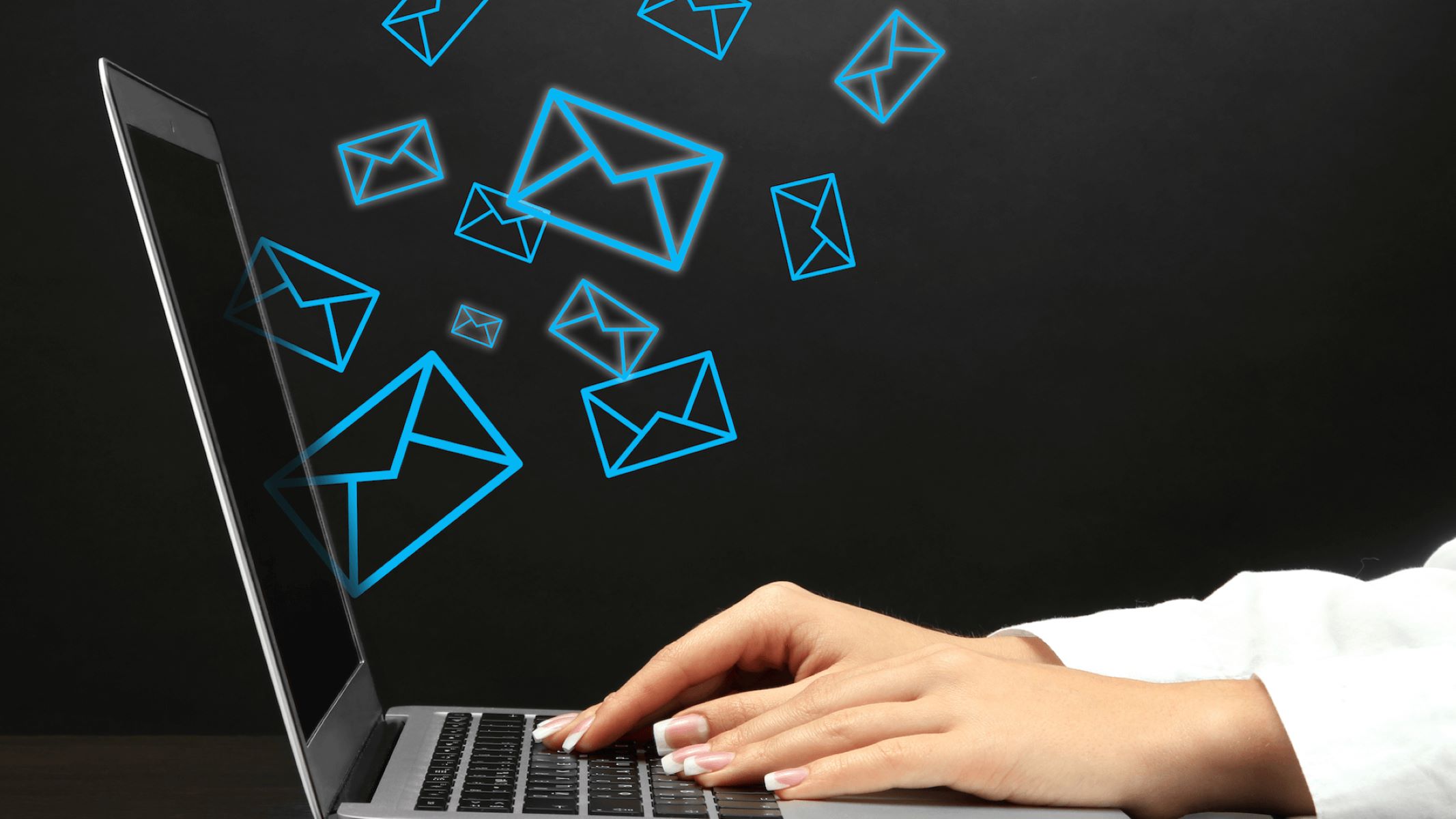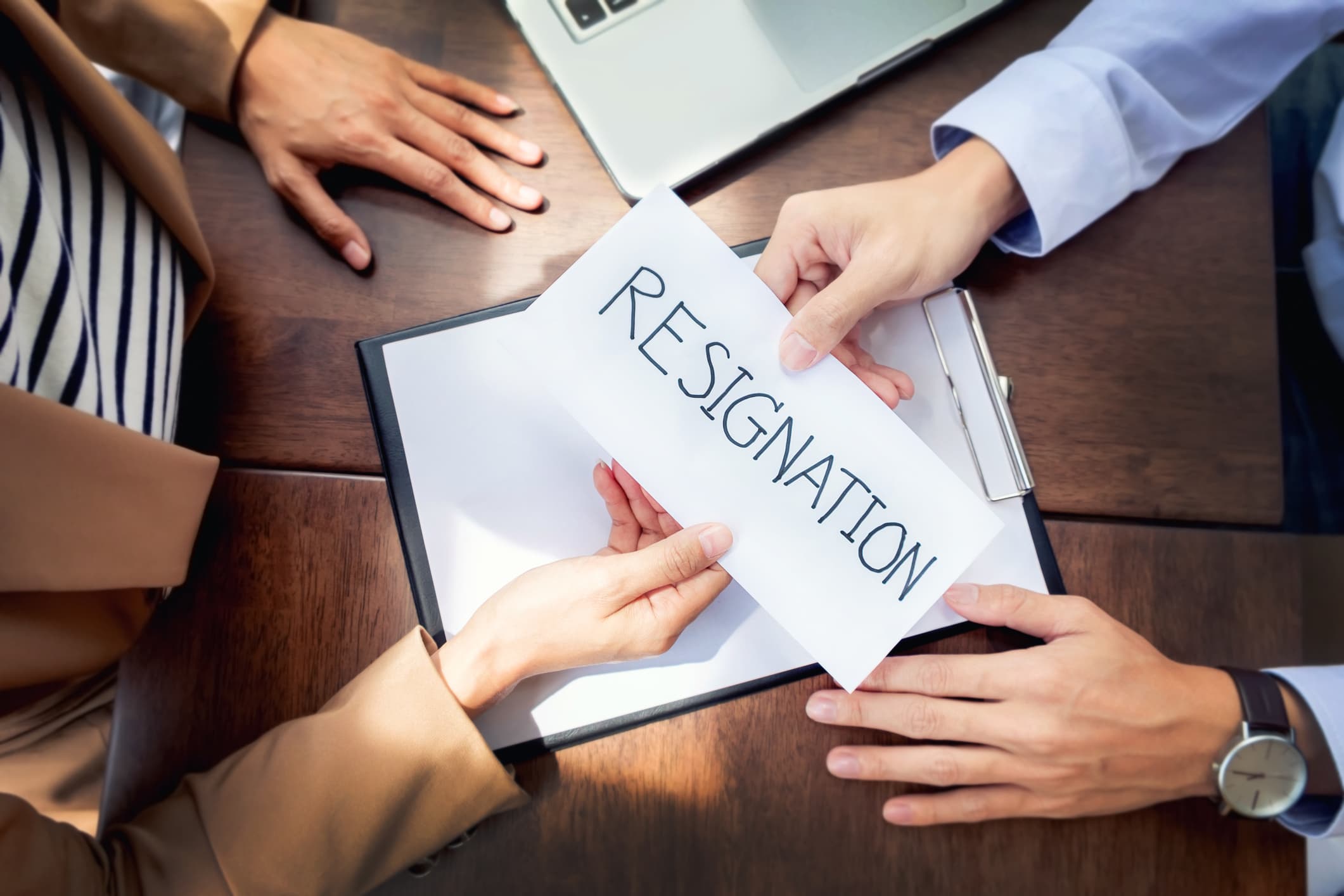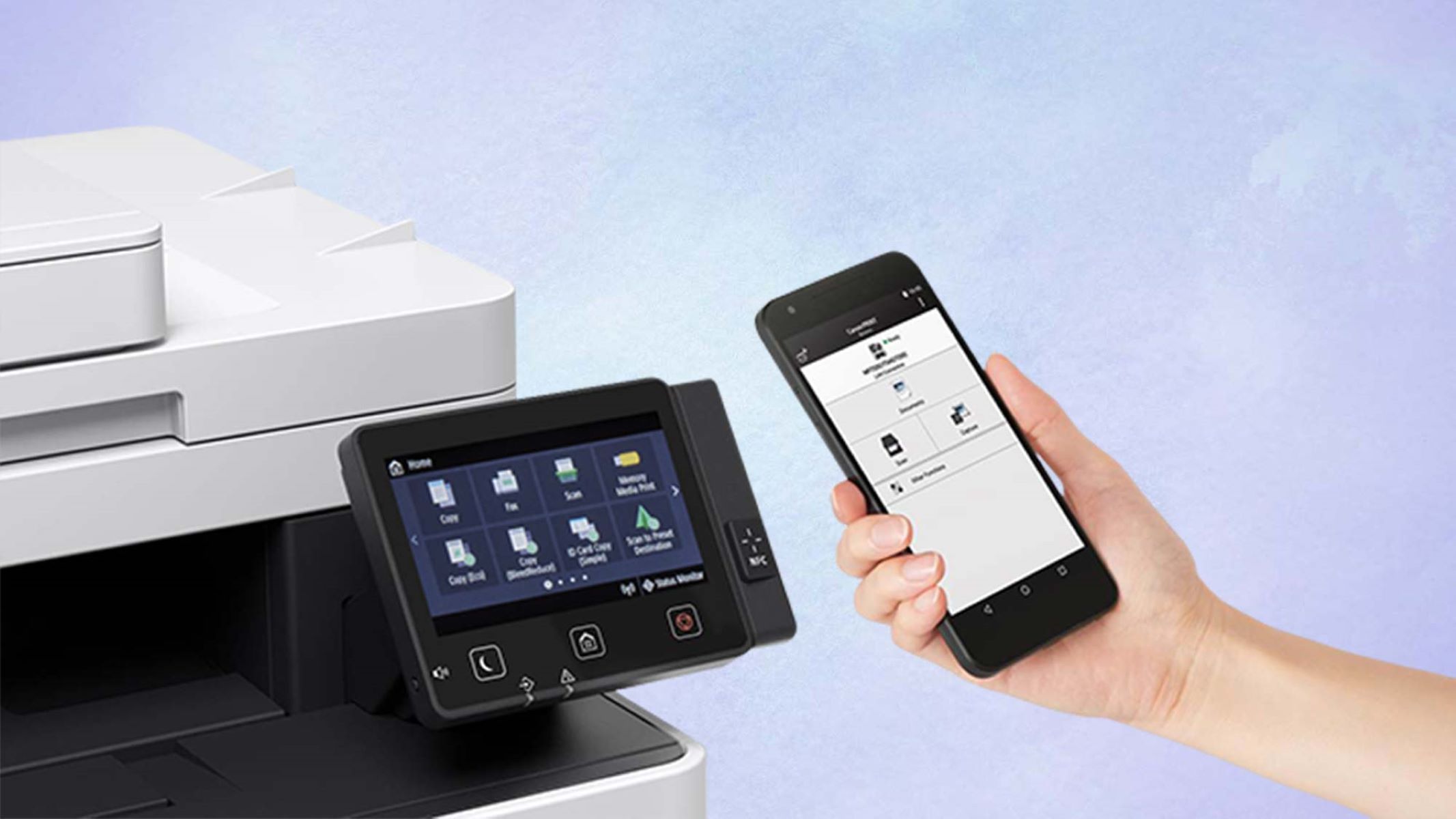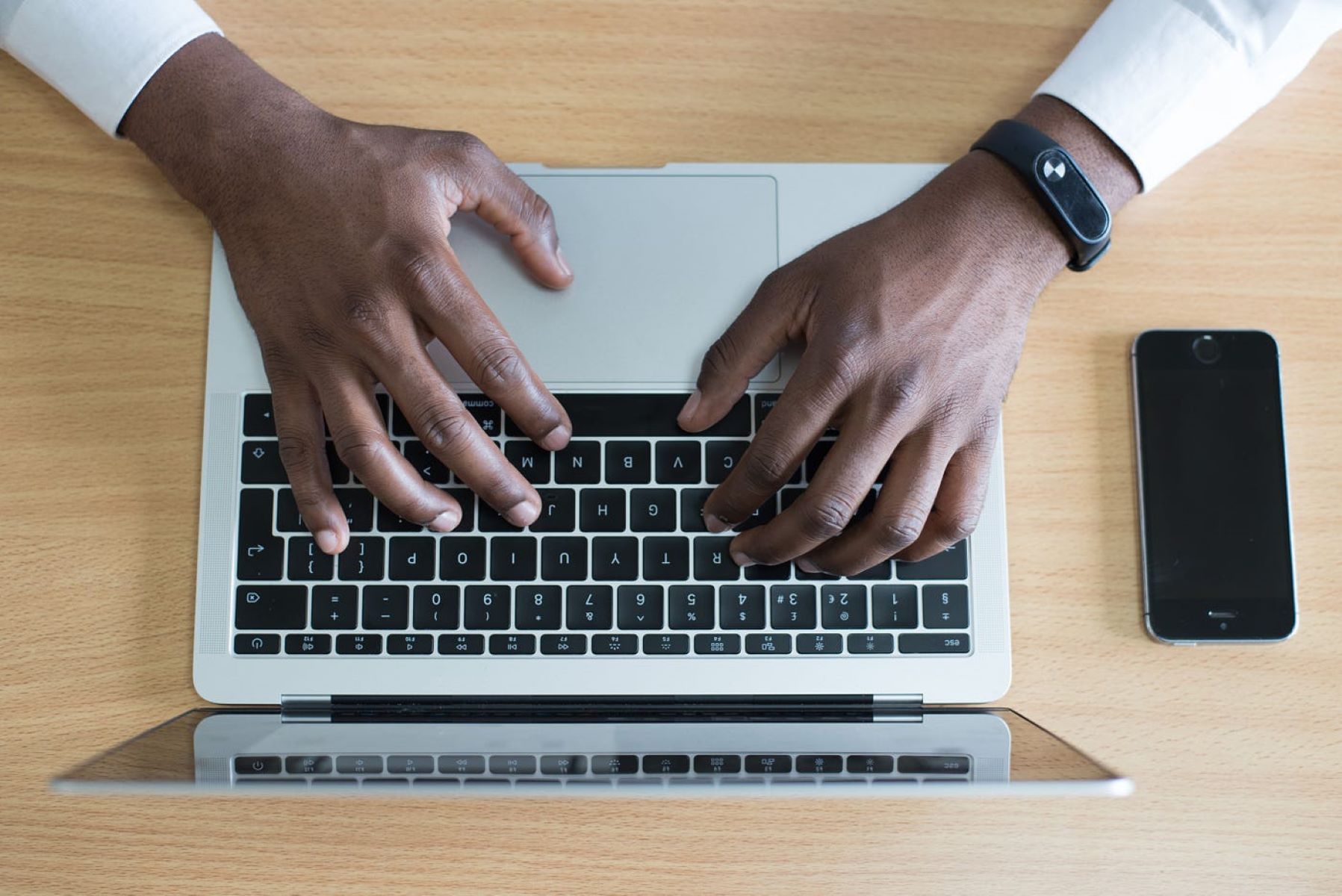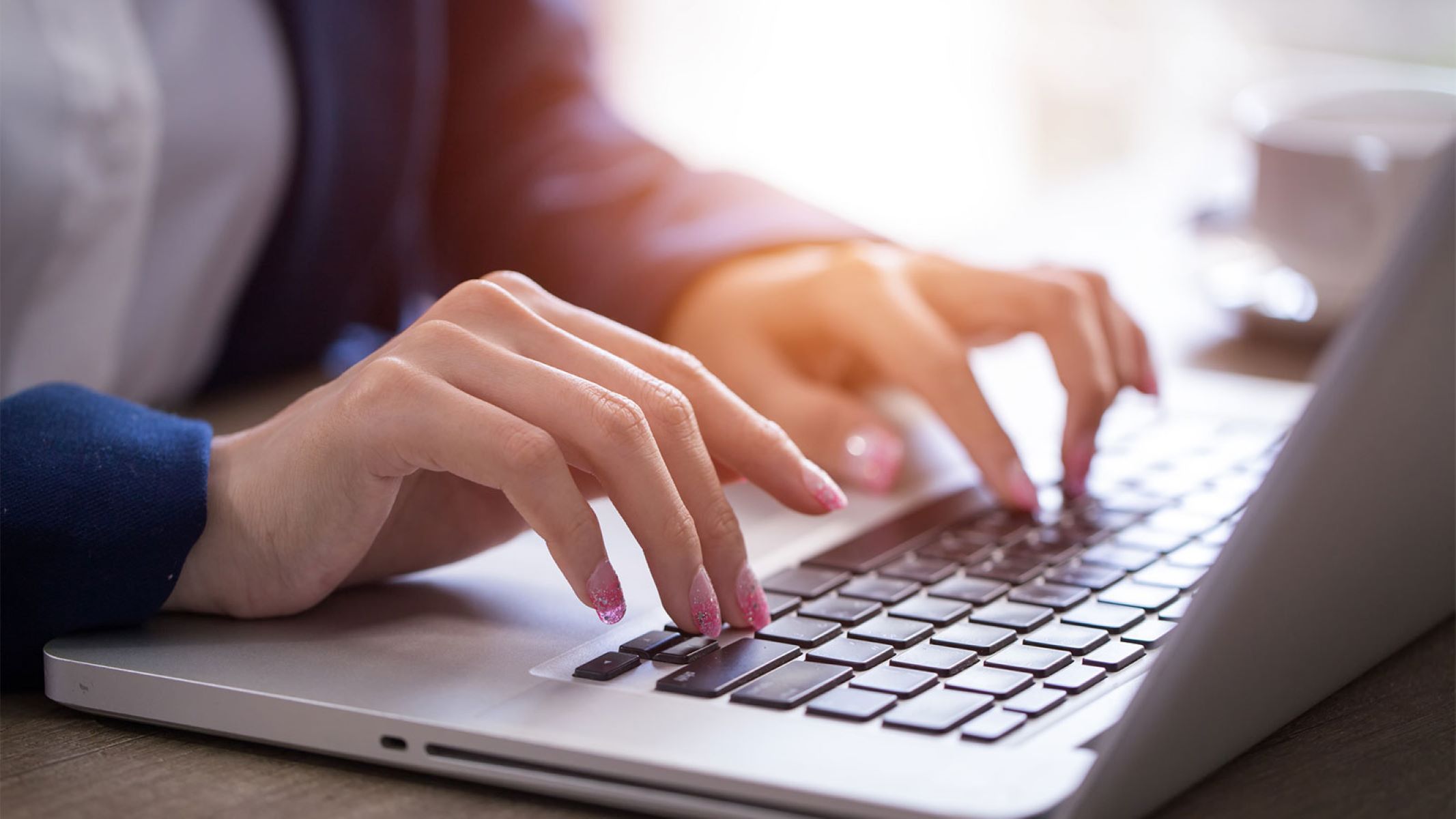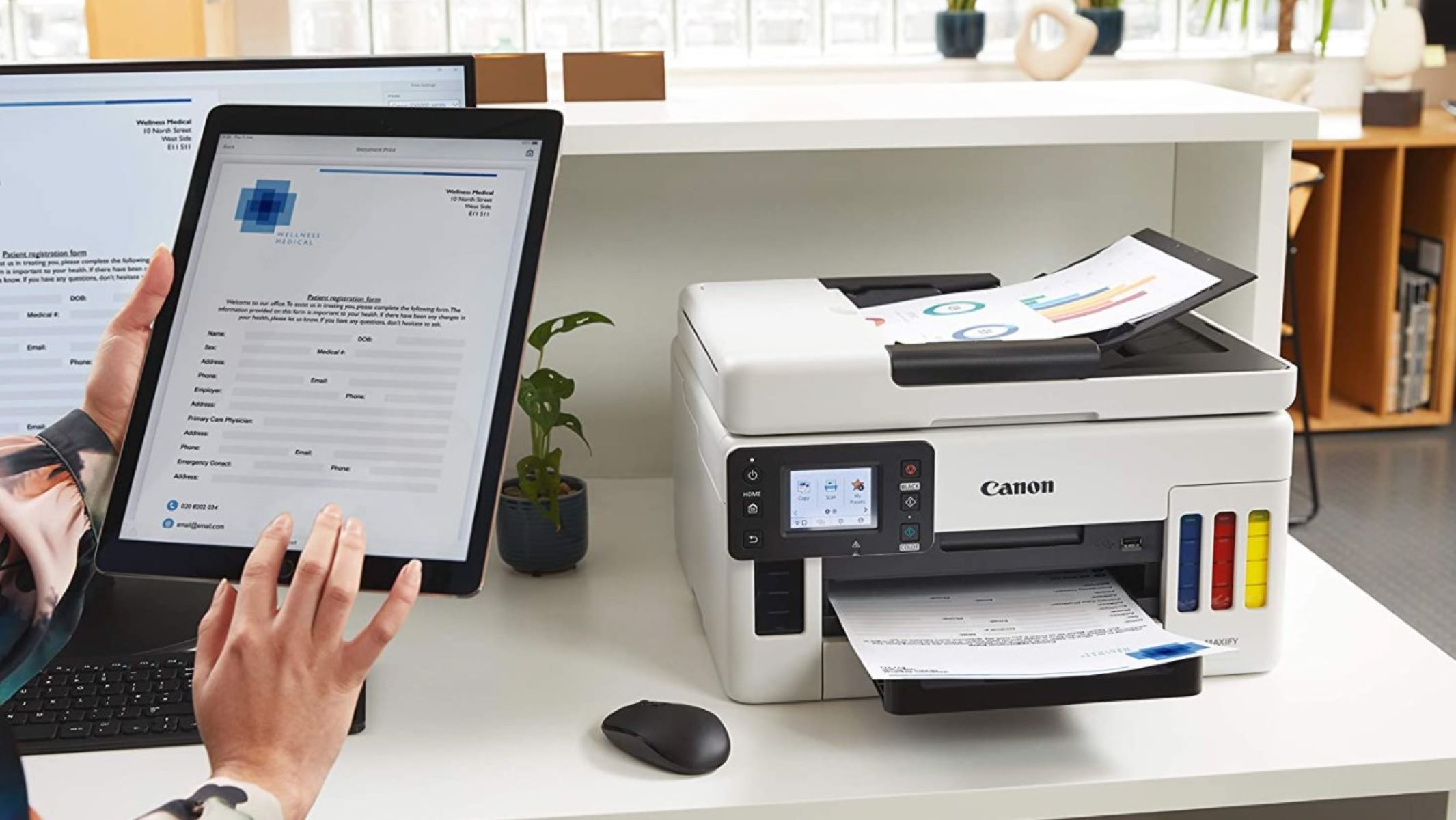Introduction
Welcome to the digital age where job hunting often starts and ends with an email. While submitting your resume and cover letter is the first step in the application process, don’t underestimate the power of a follow-up email. Sending a follow-up email after submitting your application can make a significant difference in landing that desired job.
Job applicants often wonder if sending a follow-up email is necessary or too pushy. In this article, we will explore the importance of sending a follow-up email for a job and provide you with valuable tips on how to craft an effective one.
When you apply for a job, your application may get lost in a sea of other candidates. A follow-up email can help you stand out from the competition by showing your genuine interest and enthusiasm for the position. It also demonstrates your proactive attitude and professionalism, which are highly valued by employers.
Not only does a follow-up email give you the opportunity to reiterate your qualifications and highlight any additional information that may be relevant, but it also helps keep you at the forefront of the employer’s mind. In a competitive job market, a well-timed and well-crafted follow-up email can be the extra push that sets you apart from other candidates.
Timing is crucial when it comes to sending a follow-up email. Sending it too soon can be seen as pushy and impatient, while sending it too late may make you appear disinterested or forgetful. Finding the perfect timing requires a delicate balance and depends on various factors, such as the application deadline and the company’s hiring process. We will delve into this topic in the next section.
To make a strong first impression, the subject line of your follow-up email is essential. It should be concise, clear, and attention-grabbing. A poorly written subject line can result in your email being overlooked or even discarded. We will provide you with tips on how to structure an effective subject line that will make the employer want to open your email and read further.
In addition to the subject line, the salutation sets the tone for your follow-up email. It’s important to come across as polite and professional while addressing the recipient. In this article, we will guide you on how to choose the appropriate salutation based on your level of familiarity with the recipient.
The body of your follow-up email is where you have the opportunity to showcase your enthusiasm, remind the employer why you’re a great fit for the position, and possibly include any additional information that may strengthen your application. We will provide you with tips and examples to help you craft a compelling and persuasive body for your email.
It’s not uncommon for job seekers to forget important details or documents when initially applying. The follow-up email is a perfect opportunity to rectify any omissions and provide any additional information that may enhance your candidacy. We will discuss how to effectively follow up with any additional information in a professional manner.
As you wrap up your follow-up email, it’s crucial to leave a positive and lasting impression. A well-crafted closing can leave a positive impact on the reader and reinforce your interest in the position. We will provide you with ideas on how to conclude your email on a strong note.
Before hitting the send button, it’s essential to review and edit your follow-up email. Errors in spelling, grammar, or tone can detract from your professionalism. We will discuss the importance of proofreading and provide you with useful tips for polishing your email.
Finally, we will explore the process of sending the follow-up email, including important considerations such as the email format and any attachments necessary. We will guide you through the steps to ensure your follow-up email reaches the intended recipient effectively.
Throughout this article, we will also provide you with follow-up email templates and examples for different scenarios, including applying for a job posting, after an interview, and following up on a networking connection. These templates can serve as a starting point for crafting your own follow-up email.
Why is sending a follow-up email important?
Sending a follow-up email after submitting your application for a job is important for several reasons. It demonstrates your professionalism, keeps you on the employer’s radar, and gives you an opportunity to stand out from other candidates.
Firstly, sending a follow-up email shows your professionalism and dedication to the position. It signals to the employer that you are genuinely interested in the job and willing to put in the extra effort to make a favorable impression. In a competitive job market, this can make a significant difference in the employer’s perception of your commitment and suitability for the role.
Secondly, a follow-up email helps keep you on the employer’s radar. When hiring managers receive a large number of applications, it can be easy for yours to get lost in the pile. By sending a follow-up email, you are reminding the employer of your application and reinforcing your qualifications and interest in the position.
Thirdly, a well-crafted follow-up email gives you an opportunity to stand out from other candidates. It allows you to reiterate your qualifications and highlight any additional information that may be relevant to the job. You can take this chance to emphasize your relevant skills and experiences, providing further evidence of your fit for the role. Employers appreciate candidates who take the initiative to provide valuable insights and demonstrate a genuine understanding of the position.
Moreover, sending a follow-up email showcases your proactive attitude. It conveys your willingness to take responsibility and be proactive in your job search process. Employers value candidates who exhibit this proactive behavior, as it indicates that you will likely show the same initiative and drive in the workplace.
Additionally, a follow-up email can help you establish rapport and build a connection with the employer. By expressing your gratitude for the opportunity to apply and your enthusiasm for the position, you create a favorable impression and leave a positive impact on the employer’s perception of you.
In summary, sending a follow-up email after submitting your application is crucial for demonstrating professionalism, maintaining your visibility with the employer, standing out from other candidates, and establishing a connection. It is an opportunity to reinforce your qualifications, express your continued interest in the position, and leave a lasting impression on the employer. By crafting an effective follow-up email, you increase your chances of progressing to the next stage of the hiring process and ultimately landing the job.
Timing is everything: When to send a follow-up email
The timing of your follow-up email can greatly impact its effectiveness. Sending it too early can make you appear impatient, while sending it too late may give the impression that you are not genuinely interested in the position. The key is to find the right balance that aligns with the company’s hiring timeline and demonstrates your proactive approach.
As a general rule, it is recommended to wait at least one week after submitting your application before sending a follow-up email. This gives the employer enough time to review your application and potentially reach out to you if they are interested. By waiting this period, you also avoid coming across as too pushy or aggressive.
However, there are instances where you may want to adjust the timing based on the specific circumstances. If the job posting states a specific timeframe for the hiring process or a deadline for applications, it is best to wait until after that timeframe before sending a follow-up email. This ensures that the employer has had ample time to review all applications and make decisions.
If there is no specific timeframe provided, you can consider sending a follow-up email after approximately two weeks. This allows for a reasonable amount of time for the employer to review applications and make progress in the hiring process. However, it’s important to conduct some research and be mindful of any industry-specific norms or practices that may influence the appropriate timing for follow-up emails.
When you decide to send the follow-up email, it’s essential to consider the day and time as well. Avoid sending your email on Mondays or Fridays, as these are typically busy days for most professionals. It’s also recommended to avoid mornings when people are likely to be preoccupied with their work and may not have as much time to read and respond to emails. Instead, aim for mid-week, preferably in the afternoon, when recipients are more likely to have some free time to review their inbox.
Furthermore, if you have had an interview or any significant interaction with the employer, it is customary to send a follow-up email expressing your appreciation within 24 to 48 hours. This shows your professionalism and gratitude for the opportunity to meet and discuss the position in further detail. However, be sure to personalize the content of your email based on your conversation to make it more meaningful and impactful.
In summary, timing is a crucial factor when it comes to sending a follow-up email. Waiting at least a week after submitting your application is generally recommended, but adjusting the timing based on the specific circumstances may be necessary. Additionally, be mindful of the day and time when sending the email to maximize the chances of it being read and considered. By strategically timing your follow-up email, you demonstrate your understanding of professional etiquette and the importance of being proactive while respecting the employer’s timeline.
Crafting an effective subject line
The subject line of your follow-up email plays a crucial role in capturing the attention of the recipient and encouraging them to open your email. A well-crafted subject line is concise, engaging, and clearly conveys the purpose of your email.
Keep your subject line short and to the point, ideally no more than 5-7 words. This ensures that it is easily readable and doesn’t get cut off on mobile devices or in email previews. A concise subject line also makes it easier for the recipient to understand the content of your email at a glance.
To make your subject line engaging, consider including a personal touch or highlighting a specific point from your application or interview. For example, instead of using a generic subject line like “Follow-Up Email,” you can personalize it by mentioning the job title or referencing a key aspect of your conversation. This catchier subject line is more likely to pique the recipient’s curiosity and motivate them to open your email.
Another effective strategy for crafting an engaging subject line is to emphasize any additional information you’re providing in your follow-up email. For instance, if you came across a relevant article or industry news that aligns with the position you applied for, you can mention it in the subject line. This not only showcases your proactive approach but also entices the recipient to explore the valuable insights you have to offer.
It’s important to strike a balance between being specific and not giving away too much information in the subject line. While you want to provide enough information to pique curiosity, you also want to leave room for the recipient to discover the details within the email itself. This encourages them to open your email to find out more.
Additionally, avoid using generic or cliché subject lines that do not add value or fail to differentiate your email from others. Examples of ineffective subject lines include “Just Checking In” or “Follow-Up on Job Application.” These subject lines do not provide any unique or compelling information and are likely to be overlooked or dismissed.
Lastly, always double-check your subject line for spelling and grammar errors before sending your email. A subject line with typos or grammatical mistakes can negatively impact the recipient’s perception of your professionalism and attention to detail.
In summary, crafting an effective subject line for your follow-up email is crucial in capturing the recipient’s attention and motivating them to open your email. Keep it concise, engaging, and personalized, while providing enough information to spark curiosity. Avoid generic or cliché subject lines, and take the time to proofread for any errors. By investing effort into your subject line, you enhance the chances of your follow-up email being noticed and read by the recipient.
Polite and professional salutations
The salutation you use in your follow-up email sets the tone for the rest of the message and establishes your level of professionalism. It’s essential to choose an appropriate salutation that aligns with your relationship with the recipient and the context of your email.
If you have previously had direct contact with the recipient, such as an interview or networking event, it’s best to use their name in the salutation. Addressing the recipient by their name demonstrates respect and personalization, and helps to establish a connection. For example, if the hiring manager’s name is John Smith, you can use “Dear John” as your salutation.
If you haven’t had a prior interaction with the recipient, or if you are unsure about their preferred form of address, it is more appropriate to use a more formal salutation. In this case, you can use “Dear Hiring Manager,” “Dear [Company Name] Recruiter,” or “Dear Sir/Madam.” These salutations maintain a professional tone while acknowledging the recipient’s role or position in the organization.
If you’re sending a follow-up email to a specific department or team, rather than an individual, you can address your email to the entire team. For example, you can use “Dear [Department Name] Team” or “Dear [Team Name].”
It’s important to use proper capitalization and punctuation in your salutation. Begin the salutation with a capital letter and use a comma or colon after the recipient’s name or title. For example, if you address the recipient as “Dear John,” you should follow it with a comma: “Dear John,” or “Dear Hiring Manager,” with a comma after the title.
Depending on the level of formality and your relationship with the recipient, you may also have the option to use more informal salutations. These would typically be suitable if you have had multiple interactions with the recipient or if there is a more casual atmosphere in the company. Examples of informal salutations include “Hello [Name],” “Hi [Name],” or “Greetings [Name].” However, exercise caution when using informal salutations, as they may not be appropriate in all professional settings.
Lastly, always sign off your email with a polite and professional closing. Common options include “Sincerely,” “Best regards,” or “Thank you.” Make sure to include your full name and any relevant contact information, such as your phone number or email address, to make it easy for the recipient to get in touch with you.
In summary, selecting a polite and professional salutation sets the tone for your follow-up email. Address the recipient by their name if you have had previous contact, or use a more formal salutation if you are unsure or haven’t had direct communication. Pay attention to proper capitalization and punctuation. If appropriate, consider using more informal salutations, but use them with discretion. Always end your email with a polite and professional closing and include your full name and contact information. By using the appropriate salutation, you can convey respect, establish rapport, and maintain a professional tone throughout your follow-up email.
The art of writing a compelling body
The body of your follow-up email is where you have the opportunity to make a strong case for your candidacy and reinforce your qualifications and interest in the position. It’s essential to craft a compelling and concise message that leaves a lasting impression on the recipient.
Start your email by expressing gratitude for the opportunity to apply and showing appreciation for the recipient’s time and consideration. This sets a positive tone and immediately signals your professionalism.
Next, remind the recipient of the position you applied for and reiterate your interest in the role and the company. You can briefly mention what appealed to you about the opportunity and how it aligns with your career goals and aspirations. This helps to demonstrate your enthusiasm and genuine interest in the position.
Highlight your relevant qualifications and experiences that make you a strong fit for the role. Emphasize specific skills or achievements that are directly related to the requirements of the job. Provide concrete examples or results to illustrate your abilities and showcase the value you can bring to the organization.
If you had an interview or any significant interactions with the recipient, refer back to those moments in your follow-up email. Mention specific points from the conversation that you found insightful or exciting. This not only shows that you were actively engaged but also helps to personalize your message and create a connection with the recipient.
In addition to reiterating your qualifications, you can use the body of your email to address any concerns or questions that may have arisen during the hiring process. If there were any gaps in your application or if you feel the need to provide further clarification on certain aspects, take the opportunity to do so in a concise and professional manner.
Furthermore, if you came across any recent developments or achievements within the company or industry that are relevant to the position, briefly mention them in your email. This demonstrates that you have been actively keeping up with industry trends and highlights your dedication to staying informed and knowledgeable.
Reiterate your enthusiasm and interest in the position towards the end of your email. Emphasize that you are available for any further discussions or interviews and that you look forward to the opportunity to contribute to the company’s success.
Finally, always end your email with a polite and professional closing. Thank the recipient once again for their time and consideration and express your willingness to provide any additional information or references upon request. Sign off your email with a closing such as “Sincerely,” “Best regards,” or “Thank you,” followed by your full name and any relevant contact information.
In summary, the body of your follow-up email should be concise, compelling, and personalized. Express gratitude, reiterate your interest in the position, highlight relevant qualifications, and address any concerns or questions. Refer back to previous interactions and demonstrate your knowledge of recent developments. Conclude your email with a polite and professional closing. By crafting a strong and compelling body, you can leave a lasting impression and increase your chances of progressing in the hiring process.
Following up with any additional information
In your follow-up email, it’s important to seize the opportunity to provide any additional information that may strengthen your candidacy or address any gaps in your application. This allows you to showcase your proactive approach and willingness to go above and beyond.
If you have a portfolio, website, or LinkedIn profile that showcases your work or relevant accomplishments, include a link or attachment in your follow-up email. This provides the recipient with easy access to additional evidence of your skills and expertise.
If you have recently completed a relevant certification, course, or training program, mention it in your email. Highlighting your commitment to continuous learning and professional growth demonstrates your dedication to staying up-to-date with industry trends and can enhance your qualifications.
Additionally, if you received any positive feedback or testimonials from previous employers or colleagues, consider sharing them in your follow-up email. This adds credibility to your abilities and can reinforce the positive image you are trying to convey.
If there were any gaps or areas that you feel you did not adequately address in your initial application or interview, take the opportunity to provide further clarification or offer additional examples in your follow-up email. This demonstrates your thoroughness and attention to detail, while also giving the recipient a more comprehensive understanding of your capabilities.
In some cases, an employer may request specific documents or references as part of the application process. If you have not yet provided these materials, make sure to include them in your follow-up email. This ensures that you have fulfilled all the necessary requirements and shows your commitment to following instructions.
However, it’s essential to be mindful of the length and relevance of any additional information you provide. While it’s valuable to showcase your accomplishments and qualifications, be selective in what you include and focus on what directly supports your candidacy for the position. Stay concise and avoid overwhelming the recipient with an excessive number of attachments or links.
In summary, following up with any additional information in your follow-up email demonstrates your proactive approach and commitment to presenting a comprehensive application. Include links or attachments to your portfolio, certifications, or testimonials that showcase your skills. Address any gaps or areas of concern, and provide clarification or additional examples as needed. Ensure that any requested documents or references are included. By providing relevant and concise additional information, you enhance your chances of standing out and making a compelling case for your suitability for the position.
Closing your email on a positive note
As you wrap up your follow-up email, it’s important to leave a positive and lasting impression on the recipient. The closing of your email is the final opportunity to reinforce your enthusiasm for the position and express your appreciation for the opportunity.
First and foremost, express your gratitude once again for the recipient’s time and consideration. Thank them for reviewing your application and for any previous interactions you may have had. This conveys a sense of appreciation and professionalism.
Reiterate your interest in the position and the company. Let the recipient know that you remain enthusiastic about the opportunity and excited about the possibility of joining their team. This reaffirms your genuine desire to contribute and be a part of the organization.
Offer your availability for any further discussions or interviews. Let the recipient know that you are open to providing additional information or participating in any additional steps of the hiring process. This shows your flexibility and willingness to move forward in the application process.
Close your email with a polite and professional closing. Common options include “Sincerely,” “Best regards,” or “Thank you.” Select the closing that best aligns with your personal style and the tone of your email. Make sure to capitalize the first letter of the closing and follow it with a comma.
End your email with your full name and any relevant contact information. Include your email address and phone number, making it easy for the recipient to get in touch with you. This saves them the effort of searching for your contact details and demonstrates your readiness for further communication.
In some cases, you may also want to include a brief signature. This can consist of your name, professional title, and any relevant social media or website links. However, keep your signature concise and professional, avoiding any excessive or irrelevant information.
In summary, closing your follow-up email on a positive note helps leave a favorable impression on the recipient. Express gratitude, reiterate your interest in the position, and offer your availability for further discussions or interviews. Use a polite and professional closing, followed by your full name and contact information. By ending your email on a positive and courteous note, you enhance the overall impression you make and lay the groundwork for future communication.
Proofreading and editing your email
Before hitting the send button on your follow-up email, it’s crucial to take the time to proofread and edit it carefully. Errors in spelling, grammar, or tone can detract from your professionalism and undermine the impact of your message. Follow these tips to ensure your email is polished and error-free.
First and foremost, check for spelling and grammar mistakes. Use a spell checker or proofreading tool to catch any obvious errors, but also take the time to carefully read through your email word by word. Pay attention to common mistakes such as misused words, typos, or punctuation errors. Even a small error can leave a negative impression on the recipient, so it’s important to be thorough in your proofreading process.
Next, review the overall tone and language of your email. Ensure that it maintains a professional and respectful tone throughout. Avoid using slang, excessive jargon, or overly casual language that may be inappropriate for a professional setting. Aim for a balanced and clear communication style that effectively conveys your qualifications and enthusiasm.
Check for clarity and conciseness in your message. Make sure that your sentences are clear and easy to understand. Avoid using overly complex language or convoluted sentence structures. Be concise and to the point, removing any unnecessary repetition or verbosity.
Read through your email to ensure that your message flows logically and cohesively. Check that your ideas are organized in a logical sequence and that each paragraph or section transitions smoothly to the next. Take the opportunity to remove any unnecessary or irrelevant information that may distract from your main points.
Consider the formatting and layout of your email. Ensure that it is easy to read and visually appealing. Use proper paragraph breaks and bullet points where necessary to organize your content in a clear and structured manner. Additionally, double-check any links or attachments you have included to ensure they are correct and functional.
Lastly, put yourself in the shoes of the recipient and read your email from their perspective. Consider how the recipient may interpret your message and whether it effectively conveys your intentions. If possible, ask a trusted friend or colleague to review your email as well and provide feedback on its clarity, professionalism, and overall impact.
In summary, proofreading and editing your follow-up email is crucial to ensure its professionalism, clarity, and impact. Check for spelling and grammar mistakes, review the tone and language, and ensure that your message is clear, concise, and well-organized. Pay attention to formatting and overall readability, and consider the perspective of the recipient. By dedicating time and effort to the editing process, you can send a polished and error-free email that effectively communicates your qualifications and enthusiasm for the position.
Sending the follow-up email
Once you have proofread and edited your follow-up email, it’s time to send it to the recipient. The way you send the email can impact its delivery and reception, so it’s important to follow certain guidelines to ensure its successful transmission and engagement.
First, verify that you have entered the recipient’s email address correctly. Double-check for any spelling mistakes or typos that could result in the email being sent to the wrong person or not being delivered at all.
It’s a good practice to include a clear and concise subject line that accurately reflects the content of your email. This helps the recipient understand the purpose of your email even before opening it and increases the chances of it being noticed and read.
Consider how you are sending the email. If you are using a professional email account, your email address should reflect your name or your affiliation with a reputable organization. Avoid using unprofessional or generic email addresses that may appear spammy or untrustworthy.
Pay attention to the timing of your email. As discussed earlier, avoid Mondays or Fridays and aim to send your follow-up email in the middle of the week, preferably in the afternoon. This way, you increase the chances of your email being seen and read when the recipient is more likely to have some free time.
In some cases, you may want to request a read receipt for your email. This feature allows you to receive a notification when the recipient opens your email, providing you with confirmation that it has been received and read. However, be mindful that some recipients may have disabled this feature, and requesting a read receipt may come across as pushy or intrusive.
Before hitting the send button, review your email one final time to ensure its accuracy and professionalism. Make sure there are no spelling or grammatical errors, and that all the information is correct and up-to-date. Check that any links or attachments are properly included and functional.
Once you are satisfied with your email, click on the send button with confidence. Keep in mind that the recipient may not respond immediately, so be patient and give them a reasonable amount of time to review and consider your email.
While you wait for a response, it’s a good practice to avoid sending follow-up emails too frequently. Space out your follow-ups and give the recipient ample time to respond. If you have not received a response within a reasonable timeframe, you can consider sending a polite and concise follow-up email to inquire about the status of your application.
In summary, sending the follow-up email requires attention to detail and consideration of various factors. Confirm the recipient’s email address, use a clear subject line, and send the email from a professional account. Be mindful of the timing of your email and consider requesting a read receipt if appropriate. Review your email one final time before sending it, and be patient while waiting for a response. By following these guidelines, you can increase the chances of your follow-up email being received and taken into consideration.
Follow-up email templates and examples
When crafting a follow-up email, it can be helpful to have some templates and examples to guide you. Here are a few follow-up email templates and examples for different scenarios:
1. Follow-up after submitting a job application:
Subject: Re: Application for [Position]
Dear [Hiring Manager’s Name],
I hope this email finds you well. I wanted to follow up on the application I submitted for the [Position] at [Company]. I am still very interested in the opportunity to join your team and contribute to the company’s success.
I believe that my skills and experience in [relevant field] make me a suitable candidate for this role. I especially resonate with the company’s mission and values, and I am impressed by the work you have done in [specific project/achievement].
Thank you for considering my application. If there is any additional information or documentation you require, please do not hesitate to let me know. I am available for an interview at your convenience and look forward to the opportunity to further discuss how my background aligns with the needs of the position.
Thank you again for your time and consideration.
Best regards,
[Your Name]
[Contact Information]
2. Follow-up after an interview:
Subject: Re: Interview Follow-Up – [Position]
Dear [Interviewer’s Name],
I would like to express my gratitude for the opportunity to interview for the [Position] at [Company]. I enjoyed our conversation and am even more excited about the role and the potential to contribute to the company’s growth and success.
Our discussion about [specific topic discussed in the interview] left a lasting impression on me. It further confirmed my belief that my skills and experiences align well with the requirements of the position.
I wanted to take this opportunity to reaffirm my strong interest in the role and to reiterate my enthusiasm for joining the team at [Company]. If there are any additional questions or information you need from me, please don’t hesitate to reach out. I am confident that my background and skills make me a valuable asset to the company.
Thank you again for your time and consideration. I look forward to the next steps in the hiring process.
Sincerely,
[Your Name]
[Contact Information]
3. Follow-up after a networking connection:
Subject: Nice Meeting You at [Event/Networking Event]
Dear [Contact’s Name],
It was a pleasure meeting you at [Event/Networking Event] earlier this week. I greatly enjoyed our conversation about [topic discussed] and found your insights on [specific area of expertise] to be valuable.
I appreciate your willingness to connect and share your experiences in the industry. Your knowledge and expertise have both inspired and motivated me to further explore opportunities in [field/industry].
I wanted to take this opportunity to express my gratitude for the time you dedicated to our conversation. I would be thrilled to continue the conversation and explore potential ways we can collaborate or support each other in the future.
Thank you once again for your time and insights. I look forward to staying in touch and potentially connecting again soon.
Best regards,
[Your Name]
[Contact Information]
Please note that these templates and examples should serve as a starting point. Personalize and customize them according to your specific circumstances and the nature of your relationship with the recipient. Adjust the tone, language, and content to reflect your individual style and the particularities of the situation.
Remember that the goal of a follow-up email is to demonstrate your professionalism, enthusiasm, and suitability for the position or opportunity. Use these templates and examples as a foundation to craft your own compelling and personalized follow-up email.
Conclusion
Sending a follow-up email for a job is not just a formality, but a valuable opportunity to showcase your professionalism, reinforce your qualifications, and stand out from the competition. By carefully crafting your subject line, salutation, body, and closing, you can create a strong and compelling follow-up email that leaves a lasting impression on the recipient.
Remember, timing is important, so choose the right moment to send your follow-up email, ensuring that you give the employer enough time to review your application. Craft a subject line that grabs their attention and entices them to open your email. Use a polite and professional salutation that matches the level of familiarity with the recipient.
The body of your email should be concise and compelling, emphasizing your qualifications, addressing any concerns or questions, and expressing your continued interest in the position. Additionally, use this opportunity to provide any additional information that may enhance your candidacy.
Close your email on a positive note, thanking the recipient for their time, expressing your enthusiasm, and offering your availability for further discussions or interviews. Proofread and edit your email to ensure it is error-free and conveys your professionalism effectively.
When it comes to sending the follow-up email, double-check the recipient’s email address, use a clear subject line, and send it from a professional account. Consider timing and give the recipient a reasonable amount of time to respond before sending additional follow-ups.
Lastly, take advantage of follow-up email templates and examples to guide you in crafting your own compelling email. Personalize and customize these templates to reflect your specific circumstances and relationship with the recipient.
By following these guidelines and putting in the effort to create a well-crafted follow-up email, you increase your chances of making a positive impression, standing out from other candidates, and ultimately getting one step closer to the job you desire.









